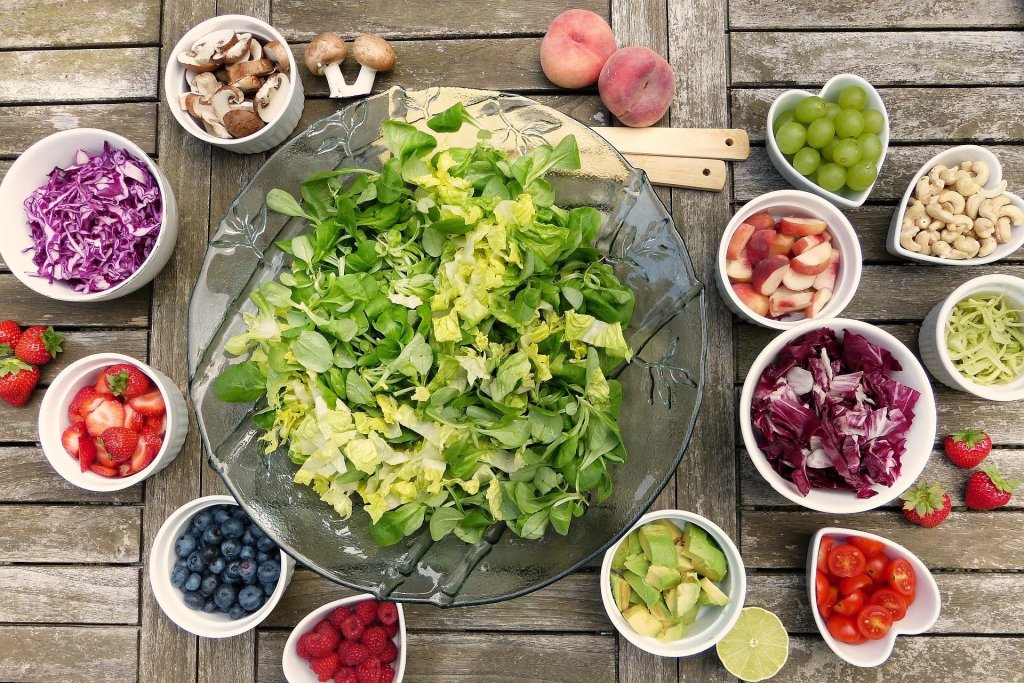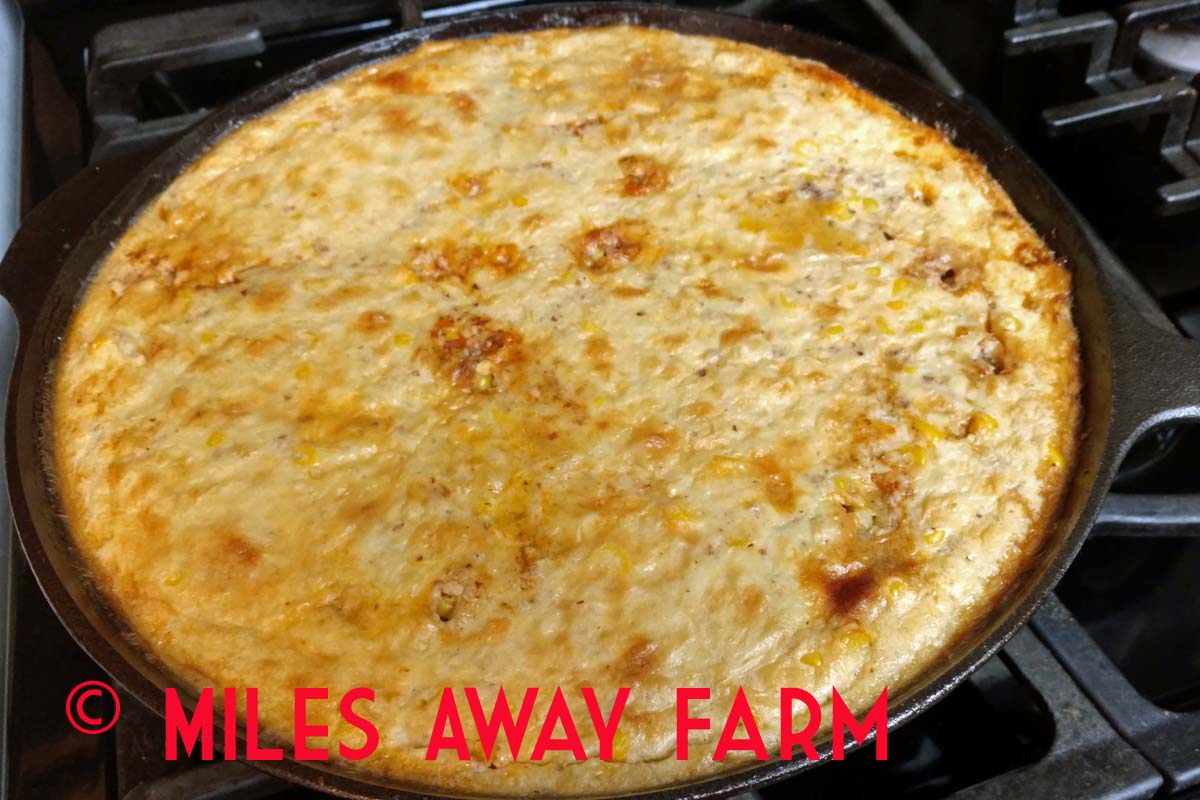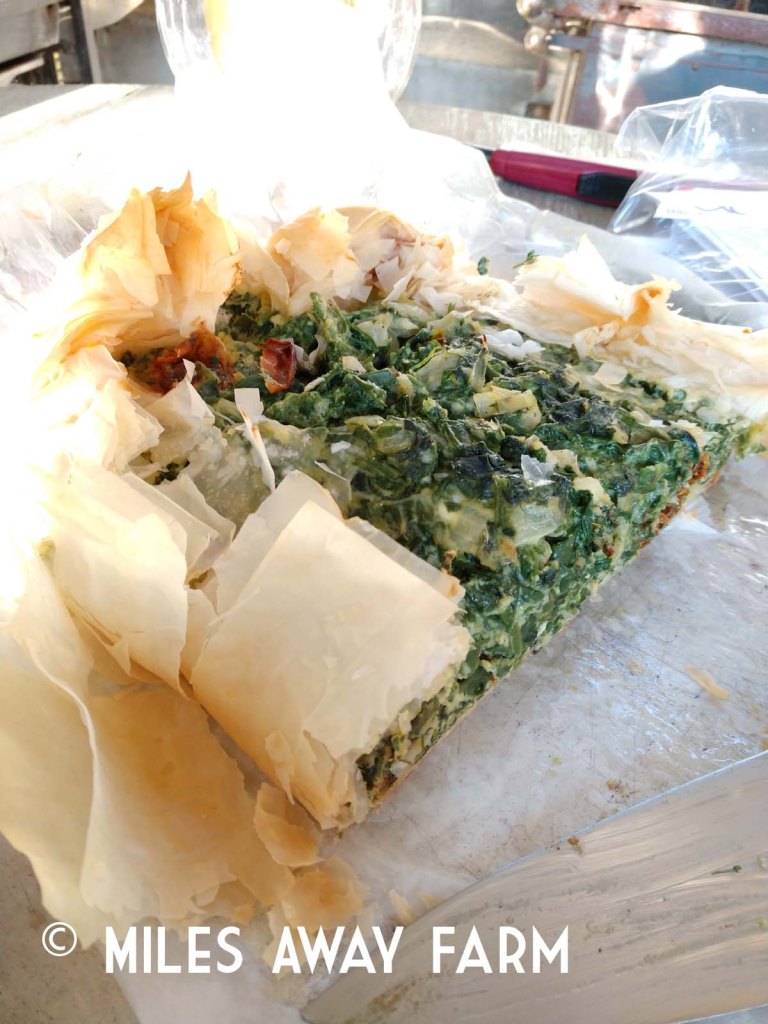You are currently browsing the category archive for the ‘Meals’ category.

Many years ago, I worked for a non-profit environmental education organization. The first time I had this dish, the founder of the organization, who was vegetarian and a force of nature, brought it to a potluck. I’m not normally a tofu lover (and I’ve even gone so far as to make it from scratch from ground soy beans) but I loved it in this dish and asked her for the recipe. Here are her original directions:
- Cooked rice
- 1 can diced tomatoes (flavored)
- 1 package baked tofu (Italian or other flavored)
- 1/2 pack feta cheese
- Artichoke bottoms
- 1/2 red bell pepper, diced
- 1 package raw spinach
- Garlic powder
- Jack or other cheese, shredded
Mix all ingredients and place in a baking pan. Add water/bouillon if seems too dry. Bake at 350 until hot and crispy.
Ha. Not a lot to go on, but honestly, you don’t need much to go on. This recipe is infinitely variable and hard to mess up.
Here’s my more fleshed out version.
Read the rest of this entry »
I’m a fan of America’s Test Kitchen and have been a subscriber to Cooks Illustrated since the late 1990’s. Over the years, when I’ve had an abundance of one ripe fruit or another, I’ve tried out a variety of their ice cream recipes. A very long time ago, I had an uncle send me a small pint sized ice cream maker where you froze the special bowl and then hand cranked it for 5-10 minutes. It was fun to experiment with it. Then a few years ago, I broke down an ordered a Cuisinart ice cream maker, which was really just a larger electric version of the same system, for less than $100.
But as I get older, and can afford fewer and fewer calories and have more dramatic reactions to large amounts of sugar, I’ve done that less and less. Not to mention most recipes require you to make a custard with eggs and cream, being careful not to overcook and scramble them, and then chill well before churning. Seriously. I don’t have that kind of time or patience most days, no matter how delightful the results.
Read the rest of this entry »Buckwheat, unrelated to wheat (it’s in the smartweed/knotweed family) is called a pseudo-grain, because its not actually a grass (unlike corn, wheat, rye, barley, oats…). It’s strange almost pyramid shaped seed is most commonly used in Soba, a Japanese buckwheat noodle, and as an additive to pancakes. I have a love/hate relationship with this grain. I love it in baked goods, hate it in noodles, and think its unappealing as a “groat” or boiled whole grain cereal.
But buckwheat is grown locally by Joel’s Organics, and in a fit of “support local” I bought a bag some time back. Because buckwheat contains no gluten, its a good fit for gluten free baking. But because it contains no gluten, its also tricky to use in baked goods that need gluten to hold them together. (Soba noodles, by the way, always also contain wheat flour – so they are not a gluten free noodle).
Read the rest of this entry »
So, not surprisingly, coming out of 9 months of covid lockdown in 2020, where I decided I needed comfort, and that meant baking ALL OF THE THINGS, including sourdough bread in the spring and cakes and cookies for the holidays, my weight has ballooned to almost 140 lbs. Menopause and a drastically slowed metabolism didn’t help. More important than the increased weight, I felt like garbage. (My ideal weight is somewhere between 115 and 125 lbs). I’ll write more on this particular weight loss journey in a future post (I’m down to the 133-134 range in about 4 weeks. I’ve got a ways to go, but what I’m doing IS working).
As part of this weight loss journey, I belong to a Whole30 group on Facebook, mostly for recipe inspiration. (You can read about my Whole30 experience here.) And I’m regularly astounded at how many people don’t know how to make a simple salad dressing. Endless pictures of bottled salad dressing labels with questions of “Is this compliant?”, along with complaints that the Whole30 compliant brands (Primal Kitchen and Tessemae’s) just aren’t all that tasty, leave me shaking my head. Vinegar, oil, herbs and spices, perhaps a bit of mustard. Its actually quite simple to make a salad dressing.
Read the rest of this entry »I don’t remember when I first started eating spanakopita, a Greek “spinach pie” traditionally made in individual phyllo wrapped triangles. It took me years to learn to really enjoy eating greens, so I would have avoided it in my twenties, but I’m sure I had it in a Greek restaurant at some point and thought, this is actually pretty tasty.
But all of that pastry brushing of butter onto phyllo dough, the amount of butter involved, and individually wrapping each “pie” kept me from making them at home for a very long time. And then I found this recipe in Eating Well magazine (December 2008). They had an option for making one large tart rather than individual tartlets, and I thought, that’s probably worth a try.
Read the rest of this entry »
I’ve been a subscriber to the Nutrition Action Healthletter for years and years. This recipe originally appeared there, as a quick healthy easy weeknight dinner. They called it “Chicken and White Bean Cassoulet”, but since the bulk of the recipe is cabbage, not an ingredient one would find in any traditional French Cassoulet, I renamed it.
Read the rest of this entry »When I was making breakfast this morning, I got onto my blog to look up this recipe, and realized it wasn’t there. I can’t believe I’ve never posted this! It’s easy, filling, healthy, inexpensive, and utilizes pantry staples. PLUS it can be eaten for dinner OR breakfast. What’s not to love? This recipe is adapted from the original in Eating Well Magazine, March 1998.
Read the rest of this entry » I didn’t grow up with Tamale Pie, a mixture of ground beef, tomatoes and chili powder topped with a boxed corn bread batter and baked. In fact, it wasn’t until we were staying with my mother-in-law some 20 years ago that it came to my attention. I was doing a lot of the cooking while we were staying there, between college graduation and wherever the next job took us. My mother-in-law requested it.
I didn’t grow up with Tamale Pie, a mixture of ground beef, tomatoes and chili powder topped with a boxed corn bread batter and baked. In fact, it wasn’t until we were staying with my mother-in-law some 20 years ago that it came to my attention. I was doing a lot of the cooking while we were staying there, between college graduation and wherever the next job took us. My mother-in-law requested it.
An internet search turned up lots of recipes, which I refined into my own, and it’s become an occasional weeknight staple ever since. Inexpensive, tasty, and a good way to use up homestead staples like canned tomatoes and frozen corn and bell peppers, it can really hit the spot during those long winter months where a little extra comfort can go a long way to helping you believe that spring will eventually come again.
Tamale Pie
Weeknight comfort food
Filling
- 1 tbsp vegetable oil
- 1 medium onion, diced
- 1 bell pepper, diced
- 1-2 tbsp chili powder
- 1 tsp ground cumin
- 1/2 tsp salt
- 1/4 tsp pepper
- 2 cloves garlic, minced
- 1 lb ground beef, pork, turkey or chicken
- 1 small can (4 oz) diced green chilies (or frozen)
- 1 14 oz can corn (or frozen)
- 1 14 1/2 oz can diced tomatoes (or one pint home canned)
- 1 15.5 oz can beans of choice – optional
- 1 small can sliced olives – optional
- 1 cup shredded cheddar cheese
Topping
- 1 package 8.5 oz Jiffy corn muffin mix, made to package directions, or from scratch corn bread recipe of your choice
In large oven proof skillet, heat oil over medium high heat and saute onions, peppers, ground meat and garlic, cooking to break up clumps, until meat is no longer pink, about 5 minutes. Add in spices and saute until bloomed and fragrant, about 30 seconds. Add in tomatoes, corn, green chilies and beans/olives, if using, and bring to a simmer.
Meanwhile, prepare corn bread mixture.
Top meat mixture with cheddar cheese. Spread cornbread batter over cooked meat/vegetable mixture and spread evenly.
Place skillet in oven and bake until cornbread mixture is cooked through in the center, 20 to 25 minutes.
© 2019 Miles Away Farm, where February was brutal and we’re about 2 weeks behind in terms of the spring warm up, but the daffodils are finally blooming, the lambs are bouncing around the pasture, and spring is FINALLY here!
 Are you familiar with kohlrabi? It’s related to cabbage, broccoli and cauliflower, which are technically all the same genus/species! It’s most closely related to broccoli in terms of flavor, essentially broccoli with a modified stem that turns into an above ground alien looking bulb. You peel and eat the bulb (though the whole plant is edible), which tastes like a crisp broccoli stem when raw, and mild broccoli when cooked.
Are you familiar with kohlrabi? It’s related to cabbage, broccoli and cauliflower, which are technically all the same genus/species! It’s most closely related to broccoli in terms of flavor, essentially broccoli with a modified stem that turns into an above ground alien looking bulb. You peel and eat the bulb (though the whole plant is edible), which tastes like a crisp broccoli stem when raw, and mild broccoli when cooked.
A lot of people like kohlrabi raw, just sliced and used in a crudité (ie raw veggie) tray with dip or humus. I know one farmer who eats them like an apple! We personally love them shredded and cooked like hash browns with a bit of parmesan cheese thrown in at the end.
I plant them every spring, mostly because it’s really fun to introduce people to them at farmers market, and you rarely see them in the grocery store. Normally, you harvest them when they are about the size of a baseball/softball.
This year, I had a few that were still small when I was doing my main harvest, and so I didn’t harvest them…and then I ignored them for 3 months. They are now decidedly NOT small, resembling a small football. Kohlrabi can get woody, especially at the base, when allowed to grow large.
But as we move into fall in earnest, I’m craving all things soup and stew, including a broccoli cheese soup we love this time of year. My spring broccoli has long gone to seed, and my fall crop is still tiny and may not make it to harvest before it gets too cold. BUT I still had kohlrabi in the garden. What if I treated it like a potato, peeling and chopping it, and then cooking it until soft and pureeing it? Would that work instead of broccoli in this soup?
Turns out it worked like a charm.
If you DON’T happen to have a giant kohlrabi on hand, feel free to make this with broccoli like a normal human. Grin.
 Kohlrabi (or Broccoli) Cheese Soup
Kohlrabi (or Broccoli) Cheese Soup
- 1 1/2 lbs peeled, diced kohlrabi (or chopped broccoli), woody parts removed.
- 3/4 cup diced onion (or leek)
- 1 tbsp olive or vegetable oil or ghee
- 1 cup diced potato
- 4 cups chicken (or vegetable) stock
- Pinch nutmeg
- 1/2 tsp ground black pepper (or to taste)
- 3/4 tsp salt (or to taste)
- 4 oz grated cheese of choice (the original recipe called for blue or Gorgonzola – I used a pepper jack we had on hand)
- Half & half or good olive oil for drizzling (optional)
Sauté onions in oil of choice with a good pinch of salt in a large saucepan over medium heat until softened and just beginning to brown, about 5 minutes. Add potato, kohlrabi or broccoli, stock, salt, pepper and nutmeg.
Bring to a boil, cover, and then turn the heat down to low. Let simmer until the potato and kohlrabi are very soft, about 30 minutes.
 Stick blend using an immersion blender (or alternately, transfer to a blender in small batches) and blend until smooth. Over low heat, add shredded cheese to soup in small handfuls, stirring between each addition, until cheese is melted and incorporated. Taste for salt.
Stick blend using an immersion blender (or alternately, transfer to a blender in small batches) and blend until smooth. Over low heat, add shredded cheese to soup in small handfuls, stirring between each addition, until cheese is melted and incorporated. Taste for salt.
Serve immediately, with a drizzle of cream or a good olive oil and a grind of fresh pepper.
Bring on fall!
Looking for gifts for the holidays? Here’s where I’ll be. (This information can also be found, in more detail, on the “where to find me” page tab above). 
© Miles Away Farm 2018, where we’re amazed at how fast our brain and stomach switches from salads to soups as the weather gets cooler, and are surprised at how fast our October calendar is filling up!

When the inevitable happens and your storage onions sprout
Onions are cheap in the grocery store. And according to the Environmental Working Group’s annual list of the Dirty Dozen and Clean 15, they have very little pesticide residue, even when you don’t buy organic.
So why do I love growing my own onions? It’s hard to say exactly. But they are such a staple. They are used as the base in about a gazillion recipes, either as Mirepoix (2 part onion, 1 part celery, 1 part carrot) or the Holy Trinity in Cajun/Creole cooking (equal parts onions, celery and green bell pepper), or Sofrito in Spanish heritage cooking (onions, garlic, and…well, it depends on the region, but often tomato and peppers). Having a larder of winter storage onions at the end of the harvest season just makes me feel like no matter what the world throws at me, at least I can feed myself well, and inexpensively, if I have onions to start with. Read the rest of this entry »




